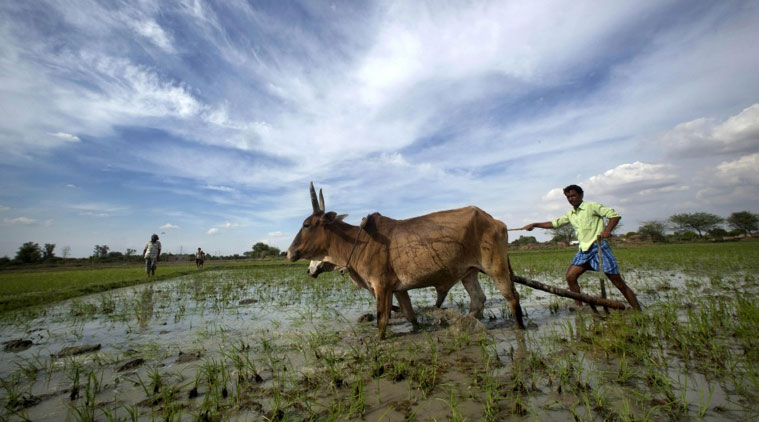Monsoon rainfall predicted below average
October 2, 2018 | Expert Insights

Rainfall in India’s annual monsoon season in 2018 was below average and less than forecast, with key crop-growing northern states among areas that have received less rain than needed.
Background
Accounting for over 50% of Indian employment, the agriculture and allied sectors are heavily dependent on the monsoons and a continuous supply of water during hot summers. Although it contributes to nearly 8% of world agricultural output, India’s primary sector employs the weakest economic sections. Most farmers are either in severe debt or marginally above poverty. Access to advanced technology for irrigation or potable water is devastatingly low.
In the past, droughts have periodically led to major Indian famines, including the Bengal famine of 1770, in which up to one-third of the population in affected areas died; the 1876–1877 famine, in which over five million people died; and the 1899 famine, in which over 4.5 million died.
Overlooking colonial rule and misappropriation of India’s treasury, episodes of severe drought correlate with El Niño-Southern Oscillation (ENSO) events. The extent to which an ENSO event raises sea surface temperatures in the central Pacific Ocean influences the degree of drought. Around 43% of El Niño events are followed by drought in India.
Analysis
Rainfall in India’s annual monsoon season was below average and less than forecast, with key crop-growing northern states among areas that received less rain than needed, the weather office said. Rains were 91% of the long-term average at the end of the July-September monsoon season, compared with a forecast of 97%, marking the fifth straight year in which the weather office has overestimated the likely rainfall.
The monsoon, which delivers about 70% of India’s annual rainfall, is critical for the farm sector, which accounts for about a sixth of India’s $2 trillion-plus economy and employs about half of the country’s 1.3 billion people.
The Indian Meteorological Department (IMD) defines average, or normal, rainfall as between 96% and 104% of a 50-year average of 89 cm for the entire four-month season.
The IMD adopted a so-called dynamic model, based on a U.S. model tweaked for India, for the first time last year to improve the accuracy of its forecasts. Despite low rainfall overall, the distribution was erratic, with some parts of the country experiencing extreme rainfall and flash floods that killed hundreds of people and damaged crops and property.
India, in its annual economic survey for 2017/18, said that the proportion of extremely dry or wet weather conditions has increased steadily because of climate change, with rain-dependent areas suffering a 14.3% fall in agricultural revenue owing to “extreme rainfall shocks”. India’s rainfall was below average mostly because of a lack of precipitation in the rice and maize-growing states of Bihar and Jharkhand and in the cotton-growing state of Gujarat.
Major farm-dependent states, such as the oilseed and pulses-growing central state of Madhya Pradesh and the northern, rice-growing state of Uttar Pradesh also received rainfall that was lower than the long-term average.
As the Northern states depend on the monsoon for its annual cultivation cycle and have no other perennial water supply, a failure of the monsoon could trigger droughts in vulnerable states such as Gujrat and Madhya Pradesh. Coupled with India’s less-than-adequate grain storage facilities, a drought could also lead to a supply shortage in essential grains.
The drop in rainfall could lift food prices and stoke inflation, which is expected to harden in the coming months because of rising fuel prices.
Assessment
Our assessment is that the rainfall predicted to be below average poses a threat to the food grain output of a largely agriculture-based economy. India does not have a national and fully completed irrigation system yet, therefore it is heavily dependent on the monsoon rains for annual cultivation. We believe that the most vulnerable areas in Gujarat, Madhya Pradesh and Maharashtra may experience some form of water shortages and even drought, based on the revised rainfall predictions. We also feel that the governments (both local and central) will have to prepare relief programs to ease the sufferings of the farmers who are negatively impacted by the shortage in monsoon rains.








Comments